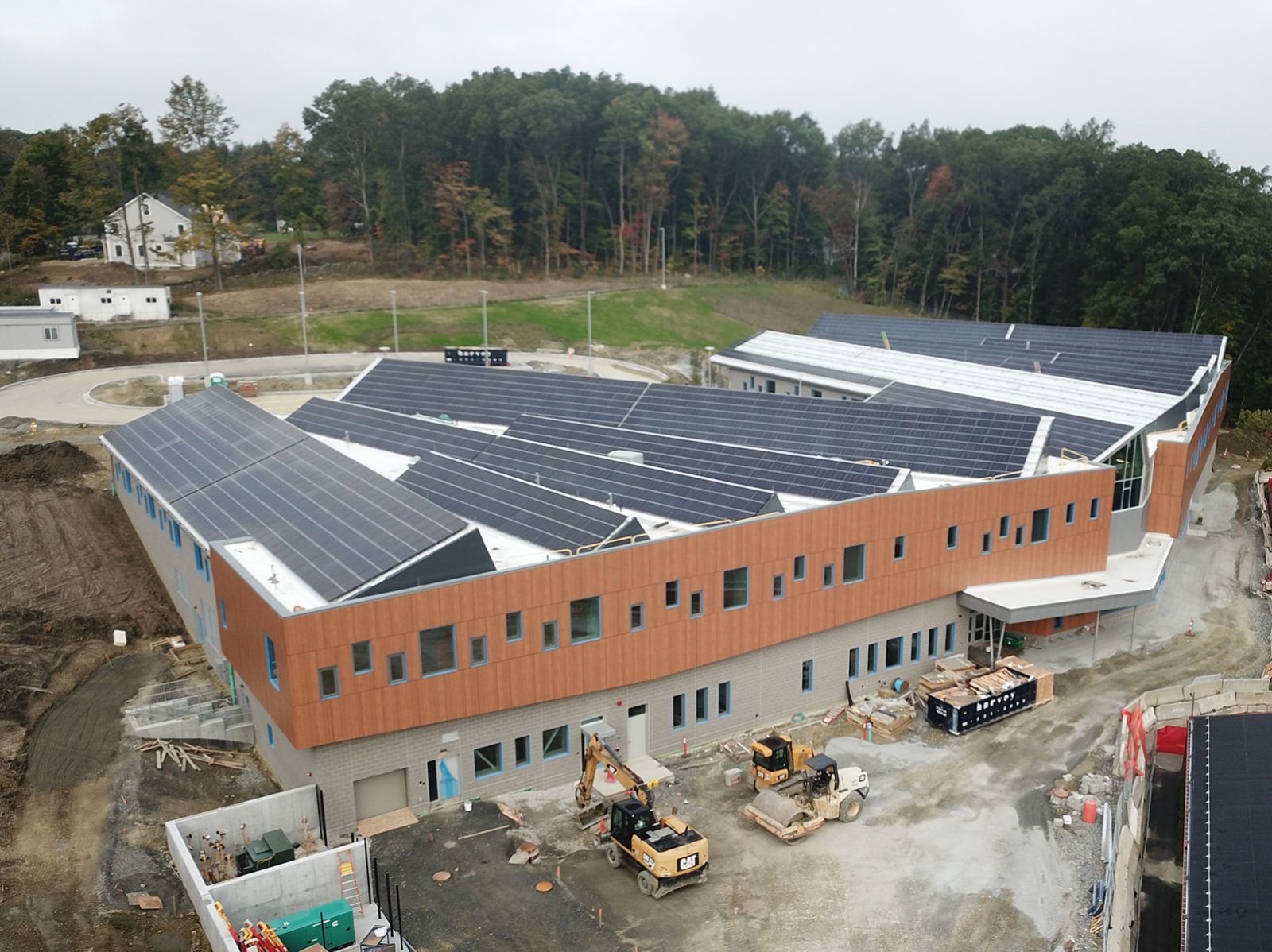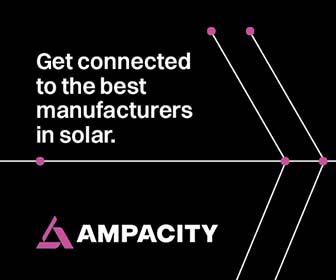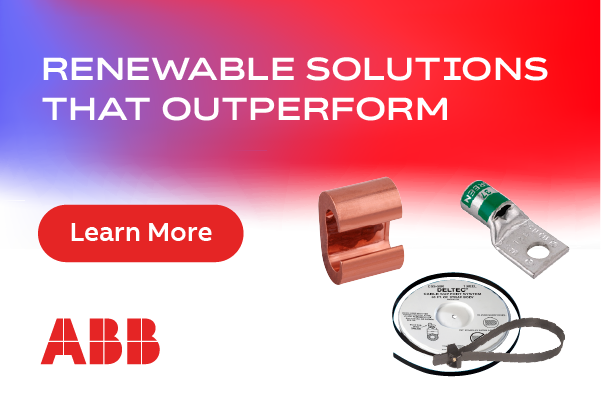Unique Roof Design has Minimal Environmental Impact
If reading, writing, and arithmetic are the hallmarks of excellent elementary school education, the Annie E. Fales Elementary School in Westborough, Mass., is one of the best, ranked in the top 20 percent for overall test scores among nearly 1,700 public schools in the Commonwealth. With its newly built, net zero-designed facility, the school has earned an A+ not only for the quality of education, but also for its impact on the environment.
.jpg)
(image courtesy HMFH Architects)
The new school, designed by HMFH Architects of Cambridge, Mass., which specializes in educational facility design, is setting a precedent for energy-efficient design in educational facilities as the first net-positive energy public school in Massachusetts. In addition, the project has been recognized by a major roofing system manufacturer as a ‘2021 Project of the Year’ in the ‘Sustainability’ category for the outstanding roof installation by an approved contractor.
“The town of Westborough has a goal of becoming carbon-emissions free by 2035,” said Caitlin Osepchuk, AIA, HMFH Associate. “The entire facility -- from its site on the side of a hill, and geothermal heating and cooling system, to its centralized energy management system designed to use one-third of the energy typically used in a school of this size, highly efficient curtain wall system, LED lighting, triple glazed windows, and its unique roof structure – was designed to minimize impact on the environment.”
The 58,000 square foot roof is indeed a unique aspect of the building, featuring 11 different raised sawtooth profiles each designed to both “optimize the amount of natural daylighting in the classrooms, and to provide the best orientation for the building’s solar array,” said Osepchuk.
In total, the facility has over 1,350 solar modules, capable of producing 507.75 kw of electricity, said Stephen Coffrin, senior project engineer with Solar Design Associates of Harvard, Mass. The solar panels were installed on a rail-based system and secured to the steel deck with universal roof mounts.
The solar array was specified with modules rated at 375-watts each with half-cut cell technology to increase the energy output by reducing the size of the cells so more fit on the panel. Individual panels are ‘split’ in half, so the top of the panel operates independently from the bottom, which provides more energy even if part of the panel is in shade.

(image courtesy HMFH Architects)
The modules are near the top of their class in overall efficiency at 21.4%, have industry leading warranties on their power output (25 years) and physical product (20 years), and are tested to withstand the increasing wind and snow loads associated with New England weather (95 pounds-per-square-foot snow load, 55 pounds-per-square-foot wind load).
The monitoring system displays module level production, greatly increasing reliability, uptime, and reducing O&M costs. Consumption monitoring is also provided to allow load-to-generation ratios to be examined.
The roofing system, installed by Capeway Roofing Systems, Inc., of Westport, Mass., includes a 22-gauge metal deck, vapor barrier, two layers of 2.6-inch polyisocyanurate insulation, and a layer of tapered insulation over the top for positive drainage, all mechanically attached to the deck. A half-inch gypsum cover board is fully adhered over the top. The waterproofing layer is reflective gray 60 mil PVC membrane with an adhesive backing on the sloped portions of the roof, and 60 mil white PVC membrane on the flat sections.
We use lots of this membrane,” said Michael Correia, project manager for Capeway Roofing. “It’s a good time saver for us since you just lay it down and roll it in, and it’s easy to work with. Our guys really like it.”
The 11 sawtooth profiles range in overall length from 65- to 187-feet long, with slopes on the southern or solar panel side ranging from 21° to 30°, and slopes on the northern side for daylighting ranging from 54° to vertical. The individual sawtooth heights from the roof deck to the peak range from seven- to 12-feet.
(image at right courtesy Capeway Roofing Systems).jpg)
In addition to the membrane installation, the roofing contractor also installed about 1,600 of the universal solar roof mounts which can be used on any type of commercial roofing system and offer superb strength to resist tensile, shear, compressive and moment forces. The screws become load-bearing columns which work in both tension and compression, making the mounts ideal for managing moment forces created by gravity and snow load on a sloped roof. Additionally, the universal mount has two, independently functioning, water blocking systems designed to maximize long-term performance.
“We specified these mounts as they are ideal for the saw tooth application and offer the best strength and the best chance for the roof to remain watertight,” said Coffrin. “The product is designed with redundant barriers in the base plate and the top plate and then secured directly to the deck.”
Installing the 1,600 roof anchors on the slopes of the saw tooth structures meant that Capeway had to ensure that each was located properly for the solar rail system that would later be installed. Once the roofing membrane was installed, the solar specifier came back to the jobsite and snapped horizontal and vertical lines to precisely indicate where each universal roof mount was to be installed.
“Installation of the 1,600 solar mounts went faster than anticipated,” said Correia, who supervised the installation, “and we were impressed with the productivity. This was our first time with these specific units, and we liked the fact that there is nothing to heat weld, which made the installation more productive than we originally anticipated. It also helped the solar installation to start a bit early.”
The original goal for the Annie E. Fales Elementary School was to build a net-zero energy facility. Based on the early data collected, it is now fully expected that the facility will actually be net-positive energy by the end of the first year, using less energy than it generates, and earning a solid A+ on its first-year report card thanks to the great work by all involved.
Sam Everett is the Owner of SE Marketing. He spent over 13 years at OMG Roofing Products. OMG’s core business is manufacturing highly engineered roofing fasteners for virtually every type of roof substrate and roofing system. In addition, they manufacture insulation adhesives, roof drains, proprietary roofing technology, as well as various rooftop components including pipe supports and solar mounts.
OMG Roofing Products | omgroofing.com
Author: Sam Everett
Volume: 2022 September/October











.png?r=9915)
